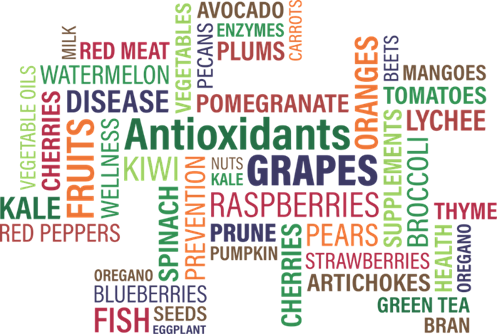4.21.2 Lesson: Disease Prevention
- Due No due date
- Points 0
- Questions 0
- Time Limit None
- Allowed Attempts 2
Instructions
DISEASE PREVENTION

Objectives:
G.6 – Students will promote community health promotion and/or disease prevention projects.
J.6 – Students will evaluate the long-term consequences of injury (e.g., permanent disability) and disease, and describe controllable and uncontrollable risk factors.
Health Promotion & Disease Prevention
During the last several lessons, you learned about some of diseases that affect many people in the United States and around the world. Many of those diseases are preventable.
Health promotion and disease prevention programs focus on keeping people healthy. Health promotion engages and empowers individuals and communities to engage in healthy behaviors, and make changes that reduce the risk of developing chronic diseases, and disease prevention focuses on prevention strategies to reduce the risk of developing chronic diseases.
In today’s lesson, you will learn disease prevention strategies, and tomorrow’s lesson will cover health promotion.
Disease Prevention
According to the Centers for Disease Control and Prevention (CDC), chronic diseases and conditions (such as heart disease, stroke, cancer, type 2 diabetes, obesity, and arthritis) are among the most common, costly, and preventable of all health problems.
Based on information from 2012, about half of all adults (117 million people) had one or more chronic health conditions, and one of four adults had two or more chronic health conditions.
In 2010, seven of the top 10 causes of death were due to chronic diseases. Together, heart disease and cancer together accounted for nearly 48% of all deaths.
Obesity is a serious health concern. During 2009–2010, more than one-third of adults (or about 78 million people) were obese. Nearly 20% of youths between the ages of 2 and 19 years were obese.
Diabetes is the leading cause of kidney failure, lower-limb amputations other than those caused by injury, and new cases of blindness among adults.
Health Risk Behaviors and Chronic Disease
Health risk behaviors are unhealthy behaviors you can change. Four of these health risk behaviors—lack of exercise or physical activity, poor nutrition, tobacco use, and drinking too much alcohol—cause much of the illness, suffering, and early death related to chronic diseases and conditions.
In 2011, more than half (52%) of adults aged 18 years or older did not meet recommendations for aerobic exercise or physical activity. Additionally, 76% did not meet recommendations for muscle-strengthening physical activity.
About half of all adults in the U.S. (47%) have at least one of the following major risk factors for heart disease or stroke: uncontrolled high blood pressure, uncontrolled high LDL cholesterol, or are current smokers. Ninety percent of Americans consume too much sodium, which increases the risk of high blood pressure.
In 2011, 36% of adolescents and 38% of adults said they ate less than one serving of fruit each day, and 38% of adolescents and 23% of adults said they ate less than one serving of vegetables less than once each day.
More than 42 million adults (almost 1 in 5) said they currently smoked cigarettes in 2012. Cigarette smoking accounts for more than 480,000 deaths each year. Each day, more than 3,200 youth under age 18 smoke their first cigarette, and another 2,100 youth and young adults who smoke every now and then become daily smokers.
Drinking too much alcohol is responsible for 88,000 deaths each year, more than half of which are due to binge drinking. Around 38 million US adults report binge drinking an average of 4 times a month, and have an average of 8 drinks per binge, yet most binge drinkers are not alcohol-dependent.
The Importance of Prevention
Increasing the focus on prevention in our communities will help improve America’s health, quality of life and, prosperity. For example, seven out of 10 deaths among Americans each year are from chronic diseases (such as cancer and heart disease), and almost half of adults has at least one chronic illness, many of which are preventable. Racial and ethnic minority communities experience higher rates of obesity, cancer, diabetes, and AIDS. Children are also becoming increasingly vulnerable to chronic disease. Today, almost one in every three children in America is overweight or obese, which predisposes them to chronic disease, and the numbers are even higher among African Americans and Hispanics.
Focusing on preventing disease and illness before they occur will create healthier homes, workplaces, schools, and communities so that people can live long and productive lives and reduce their healthcare costs. Better health positively impacts our communities and our economy:
- With better health, children are in school more days and are better able to learn. Research studies have found that regular physical activity supports better learning. Student fitness levels have been correlated with academic achievement, including improved math, reading, and writing scores.
- With better health, adults are more productive and at work more days. Preventing disease increases productivity; asthma, high blood pressure, smoking, and obesity each reduce annual productivity by between $200 and $440 per person.
- With better health, seniors keep their independence. Support for older adults who choose to remain in their homes and communities and retain their independence helps promote and maintain positive mental and emotional health.
Investments in prevention across the life span complement and support treatment and care. Prevention policies and programs can be cost-effective, reduce health care costs, and improve productivity.
Take a few minutes to review what you learned today, then answer a few questions.
Tomorrow, you will learn about health promotion and start a paper about a health promotion project.
NOTE: Assessment questions are not available for this lesson in this preview course.